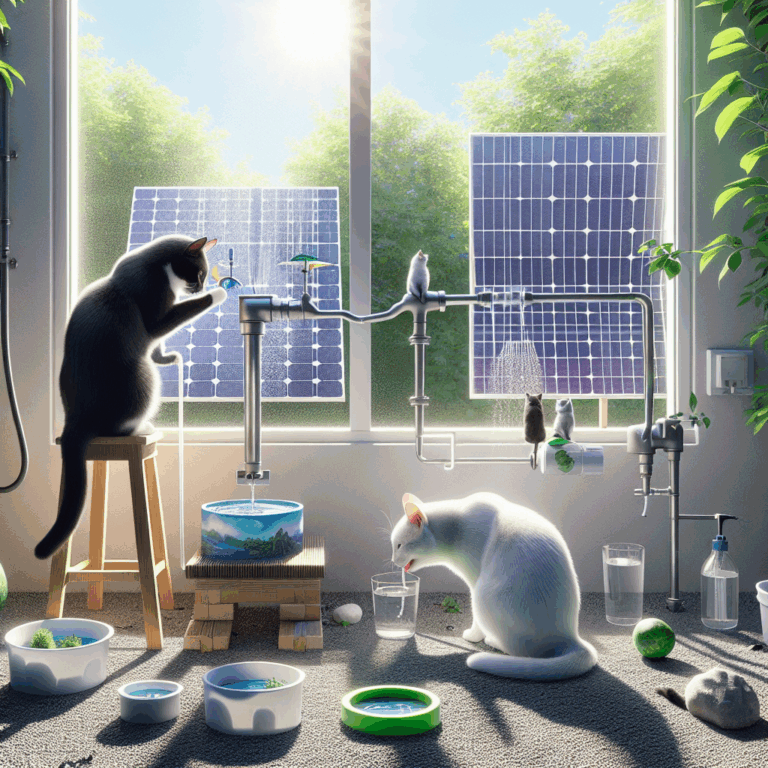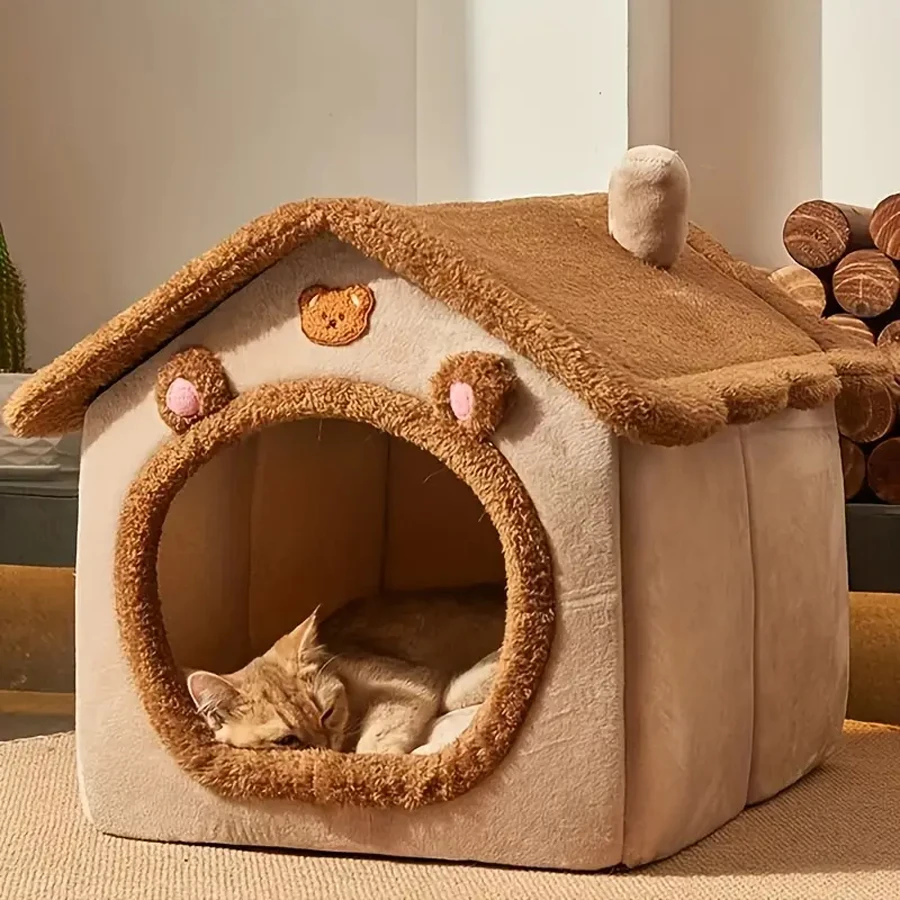The Feline Innovators of Climate Change Awareness: Cats and Their Subtle Role in Environmental Advocacy
- No Comments
In recent years, as the world grapples with the escalating threats of climate change, a new and unexpected advocate has emerged – the humble cat. These enigmatic creatures, long celebrated for their independence and charm, are now capturing attention for their unique ability to raise awareness about the planet’s most pressing environmental challenges. While cats themselves are not known to have a direct impact on global warming, their influence is increasingly felt in the realm of climate change advocacy.
The phenomenon begins with the significant presence of cats in the digital sphere. Social media platforms are inundated with images and videos of cats, which are shared and viewed by millions of people daily. Environmental organizations have cleverly tapped into this vast audience by pairing messages of conservation and sustainability with the universally adored images of felines. Campaigns featuring cats encourage viewers to consider their environmental footprint, promoting everything from reducing plastic waste to conserving energy. By associating these messages with cats, advocacy groups have found an effective way to engage a broader audience, leveraging the universal appeal of cats to spread critical environmental information.
Moreover, cats are playing a surprisingly educational role in households around the world. As urban living spaces continue to shrink, more people are turning to indoor cats as companions. This shift has led to increased awareness about the ecological impact of domestic animals and the importance of sustainable pet care. From eco-friendly litter options to understanding the benefits of spaying and neutering, the presence of cats in homes prompts discussions about responsible pet ownership and its broader environmental implications. As cat owners become more conscious of their feline friends’ ecological impact, they are often inspired to adopt greener habits in other aspects of their lives.
Cats are also emerging as symbols of biodiversity and conservation. Many rare and endangered wildcats, such as the Iberian lynx and the Scottish wildcat, are at risk due to habitat loss and climate change. Conservationists are using the plight of these majestic creatures to highlight the urgent need for habitat preservation and climate action. By focusing on the survival of these wild relatives of domestic cats, environmental campaigns foster empathy and awareness, motivating people to support conservation efforts.
Furthermore, the cultural significance of cats in various communities has been harnessed to promote environmental stewardship. In some cultures, cats are revered as symbols of luck, protection, and prosperity. By integrating these cultural narratives with messages of sustainability, environmentalists can more effectively communicate the importance of protecting the planet. For instance, in Japan, where cats are considered auspicious, local environmental groups have incorporated the image of the “beckoning cat” into their campaigns, encouraging communities to adopt eco-friendly practices as a form of blessing and good fortune.
In a world where the fight against climate change often feels overwhelming, the role of cats in raising awareness offers a unique blend of hope and accessibility. Their popularity and cultural significance provide an unparalleled platform for promoting environmental consciousness. As more people become aware of the connections between their lifestyle choices and the health of the planet, cats are quietly but effectively contributing to a growing movement towards a more sustainable future. In this way, these captivating creatures are not only companions but also catalysts for change, inspiring a global audience to take action in the fight against climate change.

In recent years, as the world grapples with the escalating threats of climate change, a new and unexpected advocate has emerged – the humble cat. These enigmatic creatures, long celebrated for their independence and charm, are now capturing attention for their unique ability to raise awareness about the planet’s most pressing environmental challenges. While cats themselves are not known to have a direct impact on global warming, their influence is increasingly felt in the realm of climate change advocacy.
The phenomenon begins with the significant presence of cats in the digital sphere. Social media platforms are inundated with images and videos of cats, which are shared and viewed by millions of people daily. Environmental organizations have cleverly tapped into this vast audience by pairing messages of conservation and sustainability with the universally adored images of felines. Campaigns featuring cats encourage viewers to consider their environmental footprint, promoting everything from reducing plastic waste to conserving energy. By associating these messages with cats, advocacy groups have found an effective way to engage a broader audience, leveraging the universal appeal of cats to spread critical environmental information.
Moreover, cats are playing a surprisingly educational role in households around the world. As urban living spaces continue to shrink, more people are turning to indoor cats as companions. This shift has led to increased awareness about the ecological impact of domestic animals and the importance of sustainable pet care. From eco-friendly litter options to understanding the benefits of spaying and neutering, the presence of cats in homes prompts discussions about responsible pet ownership and its broader environmental implications. As cat owners become more conscious of their feline friends’ ecological impact, they are often inspired to adopt greener habits in other aspects of their lives.
Cats are also emerging as symbols of biodiversity and conservation. Many rare and endangered wildcats, such as the Iberian lynx and the Scottish wildcat, are at risk due to habitat loss and climate change. Conservationists are using the plight of these majestic creatures to highlight the urgent need for habitat preservation and climate action. By focusing on the survival of these wild relatives of domestic cats, environmental campaigns foster empathy and awareness, motivating people to support conservation efforts.
Furthermore, the cultural significance of cats in various communities has been harnessed to promote environmental stewardship. In some cultures, cats are revered as symbols of luck, protection, and prosperity. By integrating these cultural narratives with messages of sustainability, environmentalists can more effectively communicate the importance of protecting the planet. For instance, in Japan, where cats are considered auspicious, local environmental groups have incorporated the image of the “beckoning cat” into their campaigns, encouraging communities to adopt eco-friendly practices as a form of blessing and good fortune.
In a world where the fight against climate change often feels overwhelming, the role of cats in raising awareness offers a unique blend of hope and accessibility. Their popularity and cultural significance provide an unparalleled platform for promoting environmental consciousness. As more people become aware of the connections between their lifestyle choices and the health of the planet, cats are quietly but effectively contributing to a growing movement towards a more sustainable future. In this way, these captivating creatures are not only companions but also catalysts for change, inspiring a global audience to take action in the fight against climate change.








